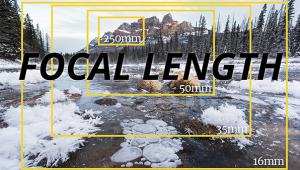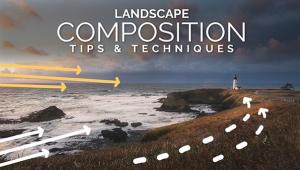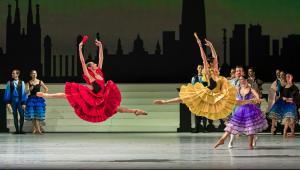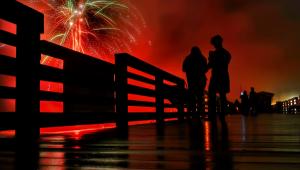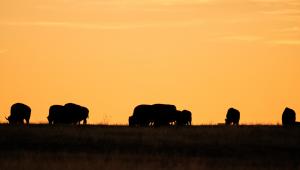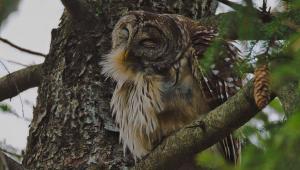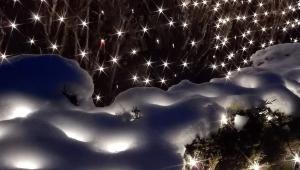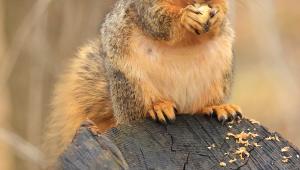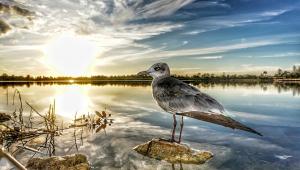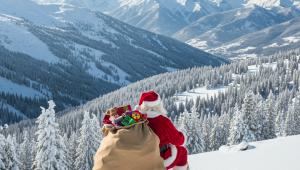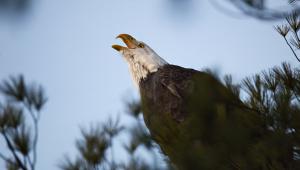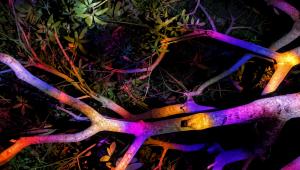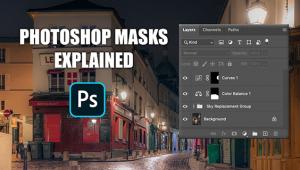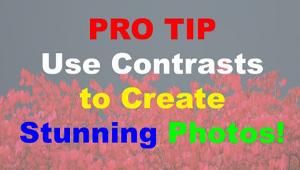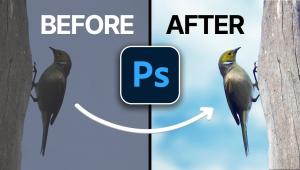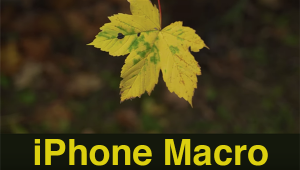Spring Photo Tips
| Spring is the season of rebirth and renewal—hence, the ritual of spring cleaning. It's also a season of contrasts: there's still snow in the high elevations, while the lower regions come into bloom; and there are hot summery spells and cold wintry spells interspersed with milder days. So in most areas, you can shoot "winter" shots and "summer" shots in the spring. But the season's arrival does bring along with it some unique photo opportunities, including migrating birds, blooming wildflowers, flowing creeks, and lots of green stuff.
In keeping with the spring-cleaning concept, this is a great time to check out your photo gear. Replace (or recharge) the batteries in your camera and flash-unit. Make sure you know where everything is (don't laugh: not-recently used odd pieces of photo gear have a habit of migrating to parts unknown over the winter months). Make sure you have an ample supply of your favorite film(s), or memory cards for a digital camera. Clean your lens(es), and check that everything works. Then you're ready to set out on spring photo excursions. Here are some ways you can make good photographic use of this new season. Spring Tips
|
 1. Spring Birds 1. Spring Birds
Traditionally, spring is the season when many birds fly north to their summer breeding grounds. If you live in the north, many fine feathered photo subjects will be appearing in your local neighborhood soon. If you live farther south, migrating birds will be passing through, likely giving you some avian subjects you don't normally see to photograph. Either way, keep your eyes and ears open for their arrival, because you'll get some photo opps you haven't had for some months. To get dramatic frame-filling shots, you'll need a long lens, and a tripod to hold it steady. Pro bird photographers favor the costly and unwieldy 600mm f/4 lens, but a less-costly 200mm or 300mm lens plus tele-converter will do nicely, and those on really tight budgets can get some very good shots with the long end of a 75–300mm f/4.5–5.6 zoom (and the popular camera makers all offer such lenses for around $200 street price). I use a 300mm f/4 and a 200–400mm f/5.6 zoom for bird photos, on both 35mm and digital bodies (the 300mm effectively becomes a 480mm lens on the digital body, the 400mm, a 640mm, due to the digicam's smaller-than-full-35mm-frame image sensor). To make up for the slower lens speed, I use faster films than the ISO 50 Fujichrome Velvia preferred by many bird pros: Ektachrome E100VS and Fujichrome Provia 100F (both pushed to EI 200), and Fujichrome Provia 400. It takes a lot of practice to be able to get sharp, well-framed bird-in-flight shots, but you can become very good at it if you put in that practice. With autofocus cameras, use continuous AF mode for in-flight shots, and single-shot AF for perched-bird shots (I generally focus perched-bird shots manually, to keep foreground branches from distracting the AF system). Top: With practice, you can become very good at tracking birds in flight, but it does take lots of practice. Gulls make great practice subjects, because they'll let you get pretty close (especially when people are tossing them food, although this one caught this fish him/herself), and move quickly. Bottom: The colorful Bullock's Oriole is one of many migrant birds that passes through the Los Angeles area each spring.
|
 2. Spring Greenery 2. Spring Greenery
Spring definitely is the greenest season of the year (at least here in the U.S.). So it's a great time to go out and enjoy the sights and smells of all that fresh greenery...and get some fine photos, too. Most in-camera exposure meters I've encountered tend to overexpose green scenes, so I'd suggest bracketing exposures of greenery until you develop a feel for how your camera responds to the color. Other than that, just go out and enjoy the sights and smells of spring, and look for green stuff. Top: Right after a spring storm is a great time to find fresh greenery to photograph. Bottom: Combine greenery with some colorful wildflowers, and you've got the makings of a lovely picture. High-angle midday lighting works here, because the hillside is near-vertical, so the light cast across it brings out its texture.
|
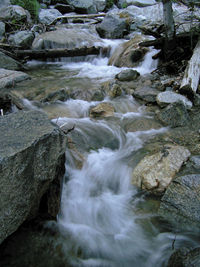 3. Spring Water 3. Spring Water
After winter rains (and abetted by spring rains), creeks, streams and waterfalls are at their most picturesque. So spring is a great time to photograph these waterways. Attach your camera to a tripod and try various shutter speeds for different effects: slow speeds will blur the moving water into cotton-candy form, while faster shutter speeds will sharply "freeze" to moving water. Shooting waterfalls and flowing streams in bright sunlight might result in too much contrast and blown-out highlights, so bracket exposures if you shoot in bright sun. Under a thin overcast, use a "snappy" film like Ektachrome E100VS or Fujichrome Velvia for best results. After winter rains, normally dry creeks turn into serious waterways, making them much better photo subjects. A slow shutter speed (1/8 second for this hand-held shot) will blur the moving water and enhance the feel of its motion.
|
 4. Spring Flowers 4. Spring Flowers
The first thing to pop into most people's heads when they think about the spring season is flowers. Many places actually have flowers of one sort or another year-round, but spring is when masses of flowers burst into bloom. And this, of course, provides great photo opps for those who love color. You'll probably want to shoot both long shots of flower fields, and close-ups of individual blooms (plus some intermediate shots of individual plants or plant groups). Early-morning and late-afternoon sunlight can add life and drama to flowers, and make those translucent backlit shots easy, but the harsh contrast of midday sun is best avoided. A thin overcast will nicely soften the light, allowing you to shoot pleasant flower pictures any time of day. I use a wide-to-short-tele zoom and a 300mm telephoto lens that focuses down to around four feet for flower shots, because they allow me to get everything from flowing fields to tight "portraits" of individual flowers. A vivid-color slide film like Ektachrome E100VS or Fujichrome Velvia is ideal for flowers, but your favorite color film should do nicely. Top: Translucent subjects like flowers come alive in low-angle early-morning sunlight. Shooting at close range with a telephoto lens at its widest aperture throws the background completely out of focus, directing the viewer's attention to the flower subject. Bottom: For a different perspective, try a high overview of flower fields. This one was shot from a light airplane. |
- Log in or register to post comments




